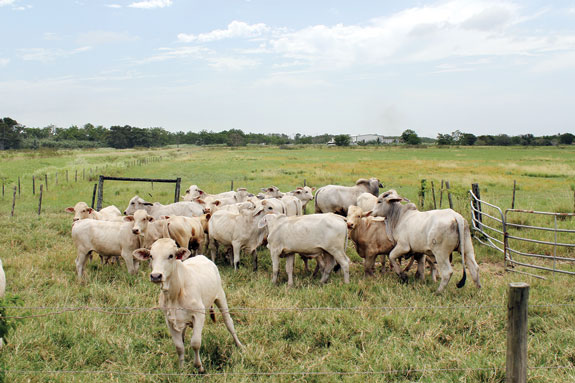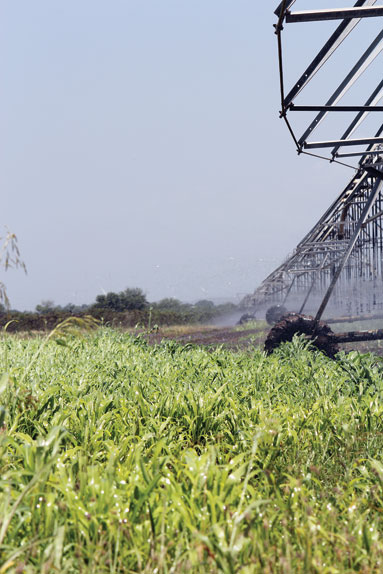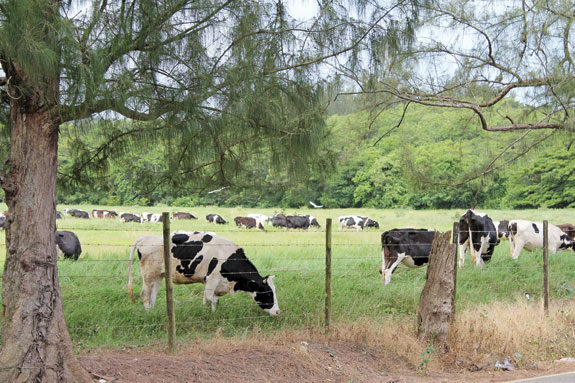Today, it continues to provide a variety of goods and products to over 3,000,000 residents and the thousands of visitors who venture to the island every year.
Included in this group are individuals whose goal is to provide locally grown meat and dairy products for those who look for fresh, home-grown food to accentuate the delicacies the island has always produced.
But in order to meet these needs, individuals in the forage industry have had to get creative to meet the needs of their own operations or operations they serve.
With climates ranging from tropical rainforest on the northern side to the semi-arid conditions of the southern coast, each producer has to look for the best ways to be successful in this productive, yet fragile environment.
One such operation is Q. Development Dairy Farm located near the northern coast in Arecibo. With a rolling herd of 900 cows and 500 heifers coming up for replacements, owner Jose Caceres and manager Israel Maldonado have looked to a variety of options to keep their herd in peak production.
One method for keeping cows with adequate fiber in their diet was to create a paddock system where animals are allowed to graze whenever they want.
For most farmers on the north side of the island, star grass and guinea grass are the most popular feeds.
Star grass was introduced to the island in the late 1950s and has become one of the most useful grasses to both dairy and beef operations.
It rapidly spreads over the surface of the ground with vigorous stolons but needs to be harvested or grazed on a regular basis in order to maintain optimal quality.
Typically, there is a 21-day resting period between field grazing or greenchopping, as grass quality drops rapidly after 45 days, but its resistance to most insects and drought tolerance during the dry season makes it a popular choice for most animal producers.
In addition to being a good grazing grass, star grass responds well to fertilization, especially to manure spread from waste lagoons that are part of most confinement operations.
Fields fertilized on a regular basis can be greenchopped regularly, providing additional forages for producers with limited land base. If managed correctly, Q. Development Dairy can rely solely on their manure stream to fertilize crops, creating a closed nutrient loop at their operation.

Sitting nearly 20 miles away from the dairy is the J. P. Fantauzzi Beef and Hay Farm.
Established in 1991, the farm sits on land that has served for many years as both a sugarcane and rice production facility.
After sitting fallow for several years, the land was rented from the Land Authority of Puerto Rico and a rigorous plan was put into place for improvement.
Starting with improved drainage, the nearly 525 acres of land have seen roads, bridges, paddocks, fences and pasture establishment bring abandoned fields into one of the most productive beef and hay farms on the island.
In areas used for hay production and paddocks with adequate drainage, star grass, pangola grass and limited areas of bermudagrass have created ideal stocking areas.
For areas where the rainy season creates waterlogged conditions, aguja (needle) grass and Argentina bahiagrass have shown tolerance to both the excess water and continued grazing on these marginal areas of the farm.
The farm currently supports 170 Brahma and Charbray purebred animals, with the focus of the farm committed to genetic improvement on the island.
While the rotational grazing tends to provide a continual release of nutrients back to the paddocks, recent arrangements for manure with chicken producers over the last three years has allowed for increased forage yields and stocking rates.
While beef production was the driving force of the operation in the beginning, hay production has continued to increase and now plays an integral part of overall production on the farm.
What was an idea to utilize some of the land to glean extra hay for dry periods has now become a production system that sees 300 round bales of 600 to 700 pounds produced every 10 weeks on the facility.
These yields have resulted from an ongoing look at fertilization, pest control options and continued pasture renewal to ensure crops stay at their highest production levels.
Recent years have created a series of problems for the hay portion of the business. Excessively long rainy seasons have created less-than-ideal conditions for hay production, but recent investments in both better equipment and a hay storage facility have meant the hay that has been produced has been some of the best the island has to offer.
Buyers from all over the island have continued to show support for the attention shown to these production practices.

With both dairy and beef producers limited in the amount of land available for forage production, VEH Farm, Inc. was created in 2004.
The Ayala brothers, Hector, Victor and Efrain, started the farm to produce the silage they needed for their two dairies on the east side of Puerto Rico.
That same year, they began a restoration project on two center-pivot irrigation systems on the farm. This allowed them to produce two rotational crops of corn and sorghum silage in the same year. With high yields of quality silage a priority of the farm, Efrain has led this operation to produce 10,000 tons of silage. This feed source has been delivered to nearly 10 percent of the dairies on the island in addition to filling the needs of their own dairies.
One of the biggest problems facing the silage farm is its proximity to the Jobos Bay. This bay is home to one of the largest coral reefs in Puerto Rico, and the farm is under continual scrutiny to ensure they have control measures in place to avoid runoff and reef contamination when controlling pests.
Efrain has spent time with USDA-NRCS to establish a no-till production farm. This, in addition to other conservation practices, has led to higher production efficiency while protecting the bay.
The farm has worked with several government agencies to monitor pesticides in ground wells and other collected runoff areas to make sure all production practices benefit both the farm and the fragile environment it is a part of.
The farm is looking to the future with projects introducing coastal bermudagrass in waterlogged areas to provide a potential hay source in land once considered unproductive.
As with any forage production in the U.S., the farmers in Puerto Rico are continually looking for the best ways to produce quality products while benefitting the land and resources around them.
Production agriculture has also had to contend with other land use developments. Some acres of productive farmland were recently lost to wind farms. While these renewable energy resources are important to the island, the farmland represents the ongoing need to balance the use of the land against the changing needs of those who call Puerto Rico home. The future will require cooperatively working together to find the best way to keep everyone productive for future generations. FG
PHOTOS
TOP: Q. Development Dairy Farm
MIDDLE: J. P. Fantauzzi Beef and Hay Farm
BOTTOM: VEH Farm, Inc. have all looked for ways to adapt their forage production acres to the growing needs of their own farms as well as others on the island. Photos courtsey of Darren Olsen.












